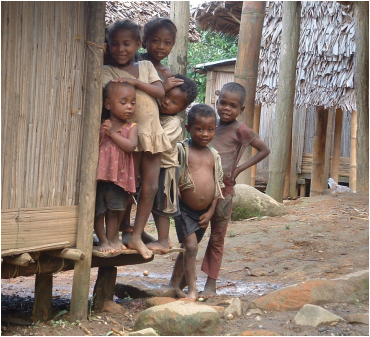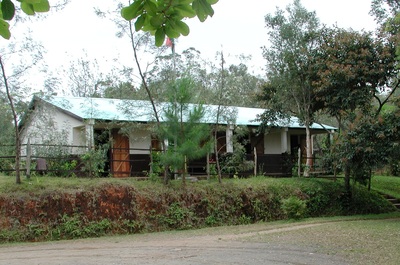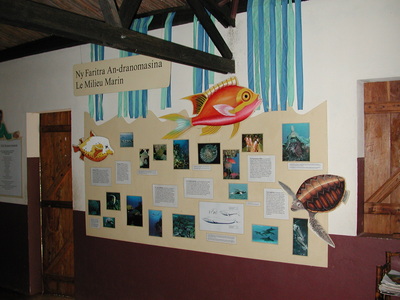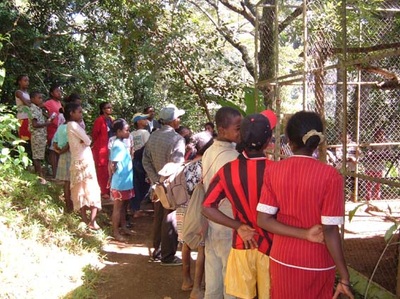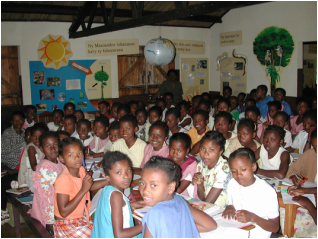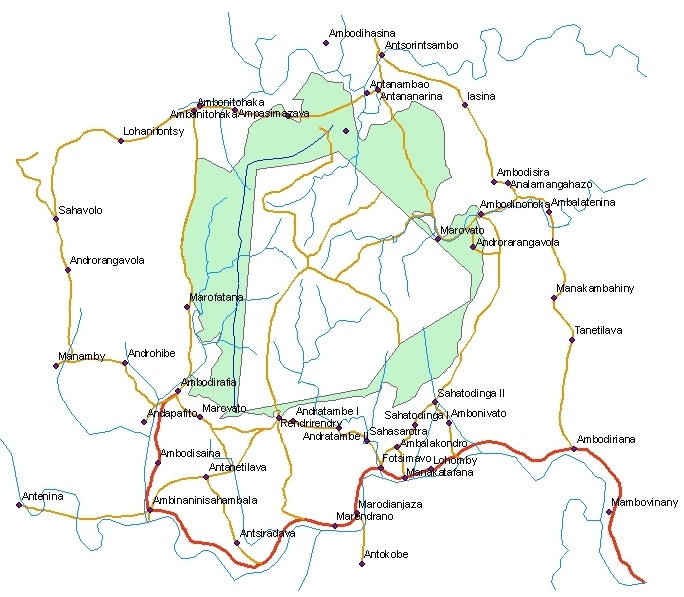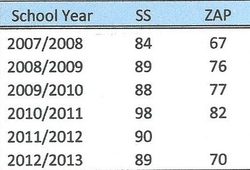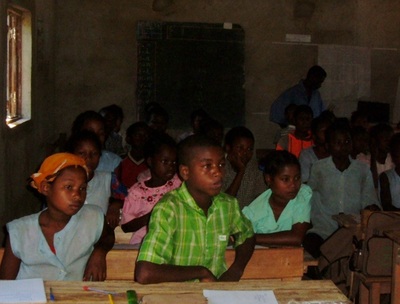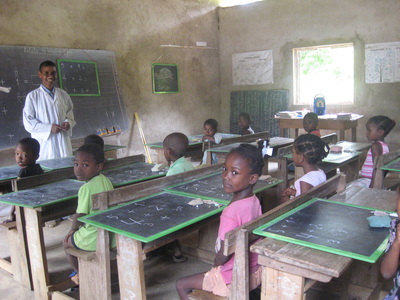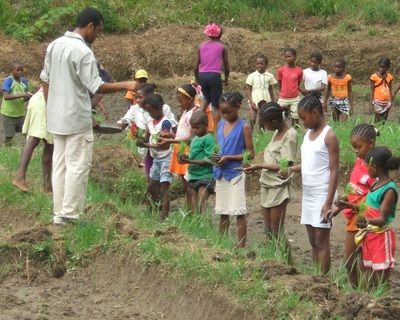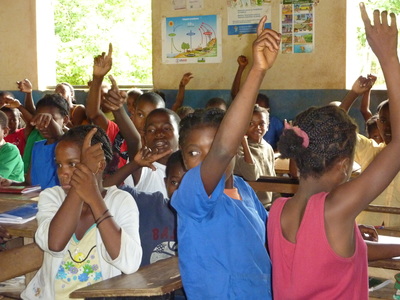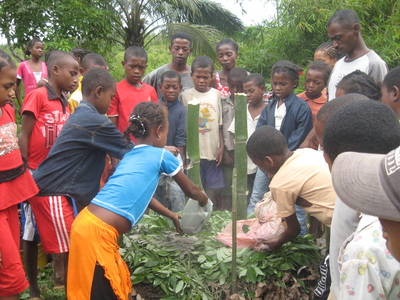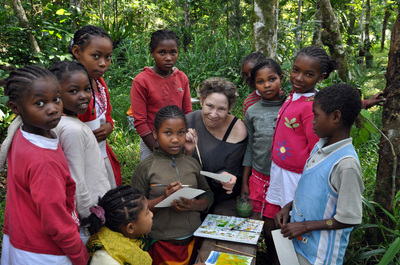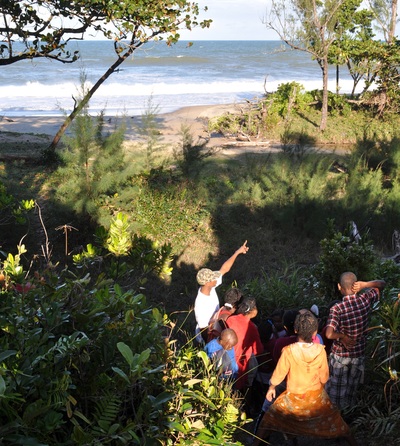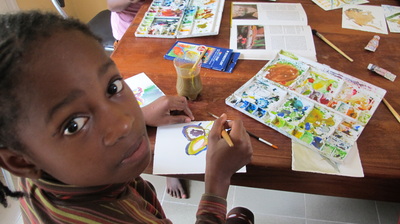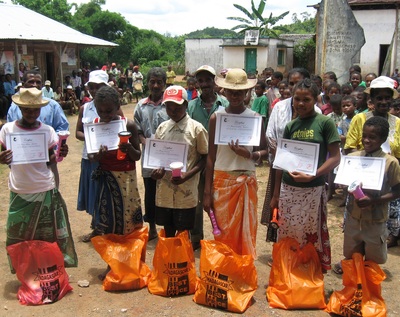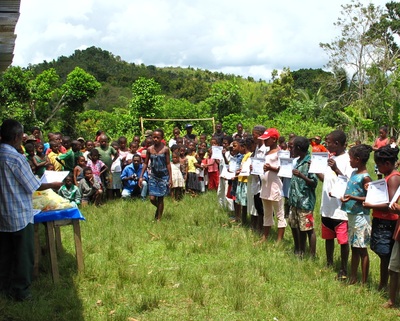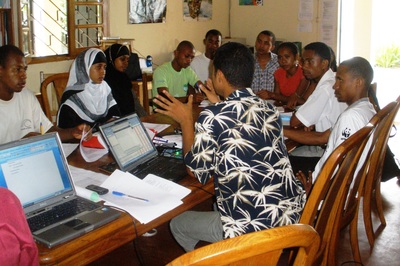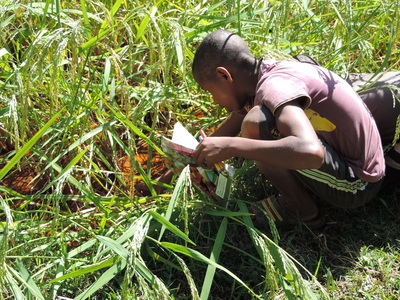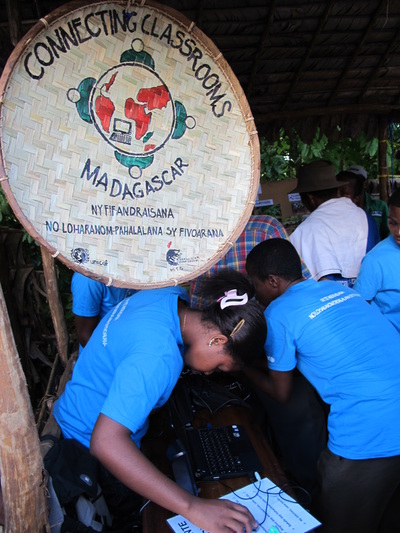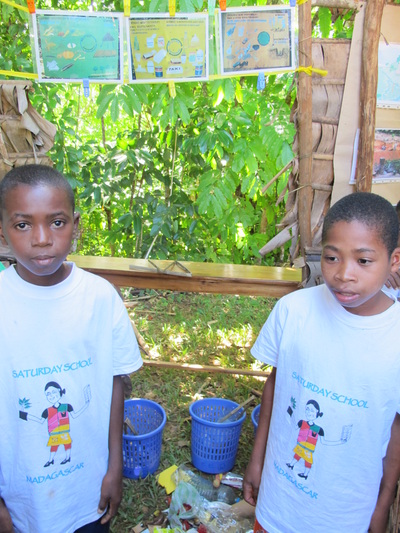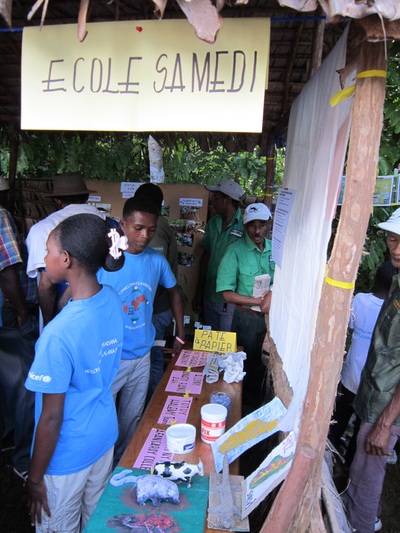Madagascar's Public Education System
Madagascar’s public education system is divided into two
levels. Primary school is a mandatory five-year program for children six to 11.
Children must take an exam at the end of primary school to obtain their
certificate of Primary School (CEPE); students who do not pass cannot progress
to secondary school. Secondary school is a seven-year program that is further
divided into two levels: junior secondary school and senior secondary school.
Junior secondary school takes four years and students who graduate are awarded
a certificate (BEPC). Senior secondary school is another three years after
which graduating students are awarded their “baccalaureate”, a degree that is
equivalent to a high school diploma in the United States.
|
Poverty has had a significant impact on the country’s
attempts to increase the quality and availability of childhood education. The
challenges are enormous. In 1991 the Malagasy people were discontent with
President Ratsiraka's leadership; political conflict and strikes led to
significant changes through adoption of a new national constitution, democratic
elections and a re-energized focus on education. Sadly, the actual results were
very disappointing. In 1994 35% of eligible children had no access to
education, 70% of children who did attend primary school did not finish. In
addition, many children had to repeat classes due to poor performance or
because they were absent much of the school year helping their parent farm the
land. In 1996/97 the national repetition rate was 35.6% but the rate for rural
children was disproportionately higher. Figures for children who graduated from
their primary school were similarly discouraging in 1996 with a national
average at 41.6% and a range of 60% in Antananarivo to 28% in rural areas.
|
Saturday School Program
One of the first things Program Managers Andrea and Charlie
did when Parc Zoologique Ivoloina re-opened in 1990 was hire Therese
Ratodiarisoa, a former school teacher, to coordinate Ivoloina’s education
program. The Center for Environmental Education’s exhibit hall and classroom
were enhanced with colorful graphics depicting Madagascar’s diverse habitats,
animals and plants. Educational tours were developed that integrated
information and concepts from the Center’s graphics with the animal collection
in the zoo. It was through participation in the CEE's education programs that families
came to see Parc Ivoloina as a valuable neighbor. The MFG was gradually
becoming a part of the community and parents were more comfortable discussing various
concerns with Program Managers Andrea and Charlie. A significant concern expressed by many
parents was the problem of children not passing their CEPE exam; the Saturday
School was born from these discussions. The program’s aim was and still is to
give primary school children intensive tutoring in core curricula subjects and
thereby enable them to graduate to secondary school. The MFG views basic
education as fundamental to conservation; children who can’t read or write
beyond the level of a 5th grade education are limited in reaching their full
potential and in becoming an informed advocate for the environment.
|
The Saturday School program was launched in 1995 and made available
to students from the five primary schools closest to the Parc. Classes were held at the CEE every Saturday
during the school year. Competence in the core subjects required to pass the
national exam was emphasized with 2 ½ hours devoted to math, 2 hours for
French, 1 hour for geography and environmental issues and 45 minutes to life
and earth sciences. The instructors took
the opportunity to use Ivoloina's demonstration areas to introduce students to
conservation issues directly relevant to their lives and growing rice was at
the top of the list. Although the vast majority of rural families grow their
own rice, few used the System of Rice Intensification (SRI) technique. The
students were therefore taught SRI techniques and were given rice paddies to
practice the technique as part of their Saturday activities.
|
|
The Saturday School program was highly successful with
over 80% of students passing their exams – an achievement that far surpassed the
national percentages. Interest in the
program grew within and outside of Toamasina with many villagers requesting Saturday
Schools for their children. The second
Saturday School was established in Ambodiriana, one of the villages near
Betampona Natural Reserve; students were drawn from seven Primary
Schools near Ambodiriana (increased to nine by 2011). A third school in Ambodirafia, serving two
Primary Schools was added in 2006 but the location was changed to the village
of Sahambala in 2008 to increase the Primary Schools served from two to five
(increased to seven by 2011). The fourth
Saturday School in Toamasina I, open to ten Primary Schools, was added in 2009. The Saturday School at Ivoloina is taught by Mr. Gimod, Rostand and Nirina whereas the three others had a team of two teachers who rotated Saturdays but that was changed to a team of three in 2009. In addition to initial training by the CEE team, the teachers now attend the ZAP Teacher Training Workshops.
Tables 1 and 2 provide a multi-year overview of the Saturday School Program in terms of student success with passing the CEPE exam and school attendance. Table 1 shows consistency in the higher percentage of Saturday School children who pass the exam compared to children in the relevant administrative zones who only attend Primary School. |
The number of children who apply to the Saturday Schools is typically two or more times the number that can be accommodated. Ivoloina accepts 100 children; the three other locations each accept 60. Up until 2012 the selection of children was based on those who did best on an entrance exam developed by the Saturday School team. In 2012 it was decided that the children who did poorly on the exam were those who could most benefit from the additional tutoring and would better reveal the impact of the Saturday School.
Reducing the percent of children who drop out or miss a significant number of classes is always a challenge and the reasons for not attending can vary from year to year and area to area. In the 2006/2007 school year it was thought that the rumors in Toamasina of a black market for human organs was the reason some parents prevented their children from attending classes at Ivoloina whereas the distance children had to walk to reach Ambodirafia (school location was changed to Sahambala in 2008/2009; shown as Sahambala in Table 2) was a problem. In 2008 attendance in all three schools was impacted by Cyclone Yvan that hit Madagascar in early 2008 and their need for children to help harvest rice a few months later. A series of teacher's strikes (due to political instability and worsening economy) was believed to be a factor in the lowered pass rates for Sahambala and Toamasina 1 and attendance rates at Ivoloina and Ambodiriana in 2011/2012. Changes in Chef ZAPs or teachers have also been noted to improve performances in some years.
Reducing the percent of children who drop out or miss a significant number of classes is always a challenge and the reasons for not attending can vary from year to year and area to area. In the 2006/2007 school year it was thought that the rumors in Toamasina of a black market for human organs was the reason some parents prevented their children from attending classes at Ivoloina whereas the distance children had to walk to reach Ambodirafia (school location was changed to Sahambala in 2008/2009; shown as Sahambala in Table 2) was a problem. In 2008 attendance in all three schools was impacted by Cyclone Yvan that hit Madagascar in early 2008 and their need for children to help harvest rice a few months later. A series of teacher's strikes (due to political instability and worsening economy) was believed to be a factor in the lowered pass rates for Sahambala and Toamasina 1 and attendance rates at Ivoloina and Ambodiriana in 2011/2012. Changes in Chef ZAPs or teachers have also been noted to improve performances in some years.
Saturday Schools at Ambodirafia, Ambodiriana and rice paddies at Parc Ivoloina.
The environmental component of the Saturday School Program has developed and diversified over the years with more hands-on activities. The CEE team's environmental education objectives: 1) to provide students with fundamental information on the relationships between the living and non-living components of the natural environment, 2) to instill in students an appreciation of and concern for the environment, 3) to increase students' awareness of environmental problems and 4) for students to acquire skills that help solve environmental problems through hands-on activities. Hands-on activities include giving all children seeds from endemic trees and allowing them to be responsible for the tree from seed propagation through planting it in a designated reforestation site, observing and participating in the making of compost, observing animals at the zoo or in the wild and drawing them and going on field trips. Parc Ivoloina is one field trip destination; students attending the Ivoloina Saturday School tour the zoo, demonstration areas and nature trails at different times of the year while students from the other schools are bused to Ivoloina for a 2-day field trip. The 2011/2012 school year was extremely special because the Ambodiriana and Sahambala Saturday Schools each took a three-day field trip to Betampona, a first! The Ivoloina students also took a three-day field trip to Tampolo, a small forest reserve which MFG Managing Member, The Lemur Foundation, helps support. This field trip was made even more special with the accompaniment of Deborah Ross, the artist who illustrated all the Ako series of children's books on lemurs written by Alison Jolly.
At the end of the school year, the Saturday School children who completed the course are given certificates in a ceremony attended by parents and other villagers, chef ZAPS, local authorities and the CEE team. Prizes are given to the students with the highest CEPE scores; in 2012, 217 certificates and 26 prizes which included notebooks, pens, pencils, a ruler and compass along with 35,000 Ar (about $15.00) were awarded. The CEE team, instructors and Chef ZAPs hold meetings to review and evaluate the outcome of the program at each site and develop the schedule for the next school year. In 2012, in addition to changing the criteria for students accepted into the program, the CEE team, Chef ZAPs and instructors decided to make several programmatic changes including more hands-on activities, field trips and engaging children to express their thoughts and emotions for the environment through art. A new template was developed for Chef ZAPs to systematically monitor and evaluate the program throughout the year and the creation of a "Parent's Association" to encourage more parental involvement and hopefully reduce student absences and dropout rates.
The MFG was selected as one of four NGOs to participate in UNICEF's Connecting Classrooms, Communities and Youth for Biodiversity Conservation in Madagascar (CCCYBC). We are proud to report that UNICEF adopted our Saturday Class Program as a Best Practice and incorporated it into their CCCYBC initiative.

